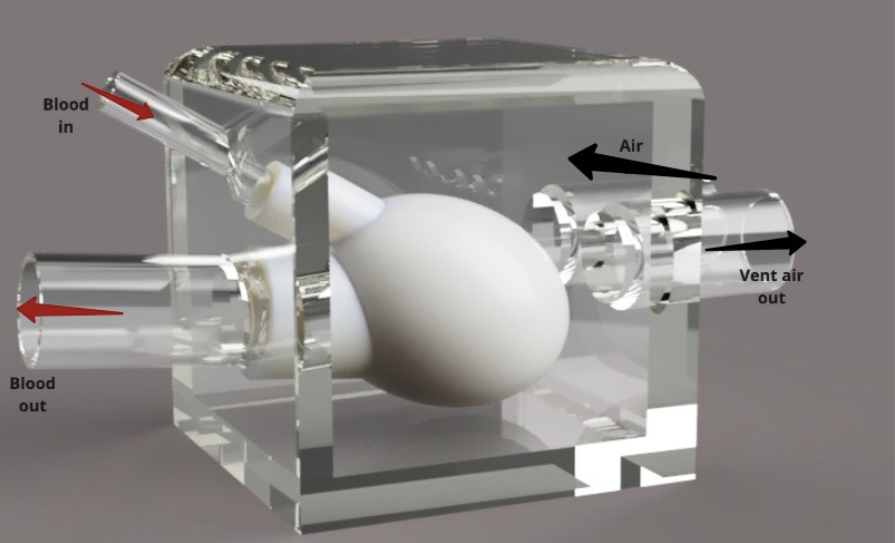Researchers from RCSI University of Medicine and Health Sciences have developed a new lab-based model of a heart and circulatory system that will help test devices to treat patients with one of the most common forms of heart failure.
The study, which used two different types of circulatory models including a silicone heart model, was carried out by RCSI in collaboration with the National College of Art and Design (NCAD). The research is published in the current edition of Frontiers in Cardiovascular Medicine.
There are two common types of heart failure: heart failure with preserved ejection fraction (HFpEF) and heart failure with reduced ejection fraction (HFrEF). Ejection fraction is the measurement used to determine the heart’s ability to pump oxygen-rich blood through the body.
In recent years, the number of patients presenting with heart failure with normal or preserved ejection fraction measurement is increasing, most likely due to the increase in prevalence of common risk factors, including old age, high blood pressure and obesity. Women are at greater risk than men.
In this research from RCSI, a model called a ‘mock circulatory loop’ was developed to mimic both a healthy heart and a heart in failure with preserved ejection fraction. The model enables potential heart failure treatment devices to be examined in terms of their effect on both chambers in the left side of the heart.
This model can test devices to examine the left atrium, the top chamber responsible for receiving oxygen-rich blood from the lungs, as well as the left ventricle, the lower chamber responsible for pumping the oxygen-rich blood around the body.
Senior author on the study, Dr Aamir Hameed, Lecturer in the Department of Anatomy and Regenerative Medicine and a Principal Investigator with the tissue engineering research group at RCSI, said: “Half of the patients presenting with heart failure have heart failure with preserved ejection fraction and the numbers are increasing in the developed world in particular due to the increase in the prevalence of risk factors. The condition can be difficult to treat with medicines and is causing a considerable burden to health services throughout the world.
“The development of this lab-based model is a milestone in heart failure research as it enables devices to be tested that have the potential to treat a condition that affects millions of people around the world, improving their quality of life and reducing the burden on health services.”
The first author on the study, Dr Andrew Malone, Postdoctoral Researcher at RCSI, said: “Until now, no lab model had been developed that could both mimic the cardiac cycle and features two independently controlled cardiac chambers to fully simulate the blood flow of the left atrium and the left ventricle during the resting phase of the cardiac cycle. This is a key step forward in the development of a robust means of testing heart failure device treatments.”
The research was funded by Enterprise Ireland which is supporting the development of the RCSI pipeline spin-out company, Pumpinheart Ltd, which will be commercialising a novel medical device for the treatment of heart failure with preserved ejection fraction.
“We are looking forward to utilising this exciting new model through our spin-out Pumpinheart, which has the potential to develop our research into a real-world treatment for patients who otherwise may have limited treatment options,” Dr Hameed said.
Drs Hameed and Malone worked with RCSI colleagues Mr Jemil Saidi and Ms Gina Rizq, and collaborators Mr Sean Gallagher, Mr Enda O’Dowd and Mr Derek Vallence in NCAD.













Leave a Reply
You must be logged in to post a comment.